
The Moon is Earth's only natural satellite. Together with Earth it forms the Earth–Moon satellite system. It is about one-quarter of Earth in diameter. In the Solar System it is the fifth largest satellite, larger than any of the known dwarf planets and the largest satellite of a planet relative to the planet. The Moon is a planetary-mass object that formed a differentiated rocky body, making it a satellite planet under the geophysical definitions of the term. It lacks any significant atmosphere, hydrosphere, or magnetic field. Its surface gravity is about one-sixth of Earth's. Jupiter's moon Io is the only satellite in the Solar System known to have a higher surface gravity and density.

A transient lunar phenomenon (TLP) or lunar transient phenomenon (LTP) is a short-lived light, color or change in appearance on the surface of the Moon. The term was created by Patrick Moore in his co-authorship of NASA Technical Report R-277 Chronological Catalog of Reported Lunar Events, published in 1968.

Lunar New Year is the beginning of a calendar year whose months are moon cycles, based on the lunar calendar or lunisolar calendar.

Chang'e, originally known as Heng'e, is the Chinese goddess of the Moon. She is the subject of several legends in Chinese mythology, most of which incorporate several of the following elements: Houyi the archer, a benevolent or malevolent emperor, an elixir of life, and the Moon. She was married to Houyi. In modern times, Chang'e has been the namesake of the Chinese Lunar Exploration Program.

Somnium is a novel written in Latin in 1608 by Johannes Kepler, and first published in 1634 by Kepler's son, Ludwig Kepler. In the narrative, an Icelandic boy and his witch mother learn of an island named Levania from a daemon. Somnium presents a detailed imaginative description of how the Earth might look when viewed from the Moon, and is considered the first serious scientific treatise on lunar astronomy. Carl Sagan and Isaac Asimov have referred to it as one of the earliest works of science fiction.
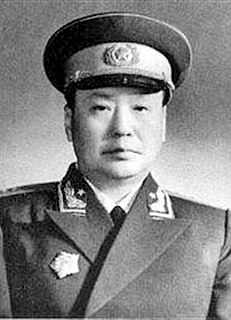
Ulanhu or Ulanfu, born Yun Ze, was the founding Chairman of China's Inner Mongolia Autonomous Region, serving from 1947 to 1966.

Mundane science fiction (MSF) is a niche literary movement within science fiction that developed in the early 2000s, with principles codified by the "Mundane Manifesto" in 2004, signed by author Geoff Ryman and "The Clarion West 2004 Class". The movement proposes "mundane science fiction" as its own subgenre of science fiction, typically characterized by its setting on Earth or within the Solar System; a lack of interstellar travel, intergalactic travel or human contact with extraterrestrials; and a believable use of technology and science as it exists at the time the story is written or a plausible extension of existing technology. There is debate over the boundaries of MSF and over which works can be considered canonical. Rudy Rucker has noted MSF's similarities to hard science fiction and Ritch Calvin has pointed out MSF's similarities to cyberpunk. Some commentators have identified science fiction films and television series which embody the MSF ethos of near-future realism.

Astrobotic Technology is an American privately held company that is developing space robotics technology for lunar and planetary missions. It was founded in 2007 by Carnegie Mellon professor Red Whittaker and his associates, with the goal of winning the Google Lunar X Prize. The company is based in Pittsburgh, Pennsylvania. The first launch of one of its spacecraft, the Peregrine lunar lander, is expected to take place in late 2022.

Han Solo is a fictional character in the Star Wars franchise created by George Lucas. The character first appeared in the 1977 film Star Wars portrayed by Harrison Ford, who reprised his role in The Empire Strikes Back (1980) and Return of the Jedi (1983). Ford returned to the role for The Force Awakens (2015), as well as a brief cameo in The Rise of Skywalker (2019). In the spin-off film Solo (2018), a younger version of the character is portrayed by Alden Ehrenreich.
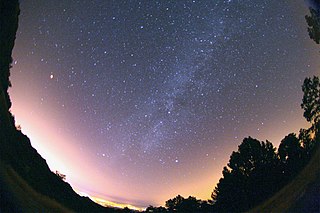
Historically significant lunar eclipses are eclipses of the Moon that are mentioned in historical accounts in connection with a significant event. Lunar eclipses are somewhat rare events, although not as rare as solar eclipses, because unlike solar eclipses they can be viewed from anywhere on the dark side of the Earth. Throughout history lunar eclipses have been held to be responsible for lost battles, and have helped make possible extraordinary escapes.
Hun and po are types of souls in Chinese philosophy and traditional religion. Within this ancient soul dualism tradition, every living human has both a hun spiritual, ethereal, yang soul which leaves the body after death, and also a po corporeal, substantive, yin soul which remains with the corpse of the deceased. Some controversy exists over the number of souls in a person; for instance, one of the traditions within Daoism proposes a soul structure of sanhunqipo 三魂七魄; that is, "three hun and seven po". The historian Yü Ying-shih describes hun and po as "two pivotal concepts that have been, and remain today, the key to understanding Chinese views of the human soul and the afterlife".

Chang'e 4 is a robotic spacecraft mission, part of the second phase of the Chinese Lunar Exploration Program. China achieved humanity's first soft landing on the far side of the Moon, on 3 January 2019.

Chang'e 5 is the fifth lunar exploration mission of the Chinese Lunar Exploration Program, and China's first lunar sample-return mission. Like its predecessors, the spacecraft is named after the Chinese moon goddess Chang'e. It launched at 20:30 UTC on 23 November 2020 from Wenchang Spacecraft Launch Site on Hainan Island, landed on the Moon on 1 December 2020, collected ~1,731 g (61.1 oz) of lunar samples, and returned to the Earth at 17:59 UTC on 16 December 2020.

2312 is a hard science fiction novel by American writer Kim Stanley Robinson, published in 2012. It is set in the year 2312 when society has spread out across the Solar System. The novel won the 2013 Nebula Award for Best Novel.
This is a bibliography of American science fiction author Kim Stanley Robinson.
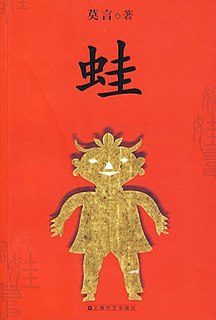
Frog is a novel by Mo Yan, first released in 2009. The novel is about Gugu, the aunt of "Tadpole", the novel's narrator. Gugu performs various abortions after the One Child Policy is introduced. The novel discusses both the reasons why the policy was implemented and the consequences of it.
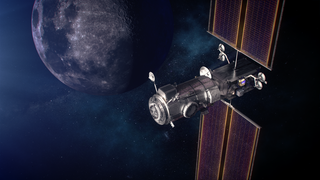
The Lunar Gateway, or simply Gateway, is a planned small space station in lunar orbit intended to serve as a solar-powered communication hub, science laboratory, short-term habitation module for government-agency astronauts, as well as a holding area for rovers and other robots. It is a multinational collaborative project involving four of the International Space Station partner agencies: NASA, European Space Agency (ESA), Japan Aerospace Exploration Agency (JAXA), and Canadian Space Agency (CSA). It is planned to be both the first space station beyond low Earth orbit and the first space station to orbit the Moon.

Nova-C is a lunar lander designed by the private company Intuitive Machines to deliver small commercial payloads to the surface of the Moon.

Moonfall is a 2022 science fiction disaster film co-written, directed, and produced by Roland Emmerich. It stars Halle Berry, Patrick Wilson, John Bradley, Michael Peña, Charlie Plummer, Kelly Yu, and Donald Sutherland. It follows two former astronauts alongside a conspiracy theorist who discover the hidden truth about Earth's moon when it suddenly leaves its orbit. Shot in Montreal on a $138–146 million budget, it is one of the most expensive independently produced films ever made.
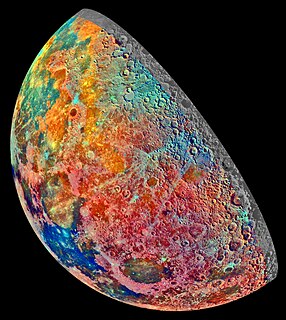
The Moon bears substantial natural resources which could be exploited in the future. Potential lunar resources may encompass processable materials such as volatiles and minerals, along with geologic structures such as lava tubes that together, might enable lunar habitation. The use of resources on the Moon may provide a means of reducing the cost and risk of lunar exploration and beyond.


















